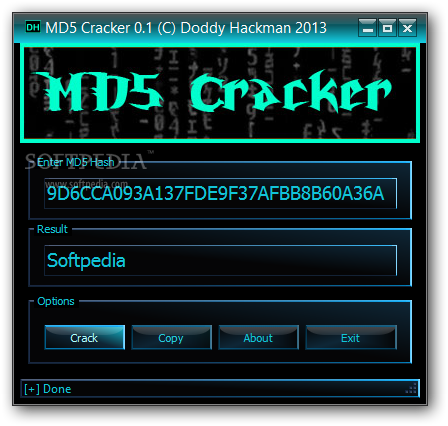

Output - for output type (empty, "json" or "plain")

Via params to avoid processing of our url parser. If you have string that contains complicated urlencoded characters you can send it directly To do so, we first begin by using the Base64 command to decode the contents of pass.txt and save the decoded data in decode.txt as our output file. The 128-bit (16-byte) MD5 hashes (also termed message digests) are. The MD5 message-digest algorithm is a widely used cryptographic hash function producing a 128-bit (16-byte) hash value, typically expressed as a 32 digit hexadecimal number. The another cool thing is that you can specify "json" or "plain" mode into URL and you will get only HASH in response. MD5 is a routine procedure of MFC to support the two input strings and documents. Just like we created Base64 encoded MD5 hashes for our file, these commands can also be used to verify the hash for a particular file. Hash Md5: Encryption and reverse decryption. Type string that you need to encode with algorithm according to next schema:įor example to visit page that contains hash of "hello world" you can just visit url: net cryptography provider, this has encrypt and decrypt fuinctionality.
#MD5 DECODE PASSWORD#
You can use direct access to this page from your browser address bar. If you wnat to use MD5, MD5 the password the user enters and compare it with the stored hash, alternatively use triple DES which is provided by the.


 0 kommentar(er)
0 kommentar(er)
